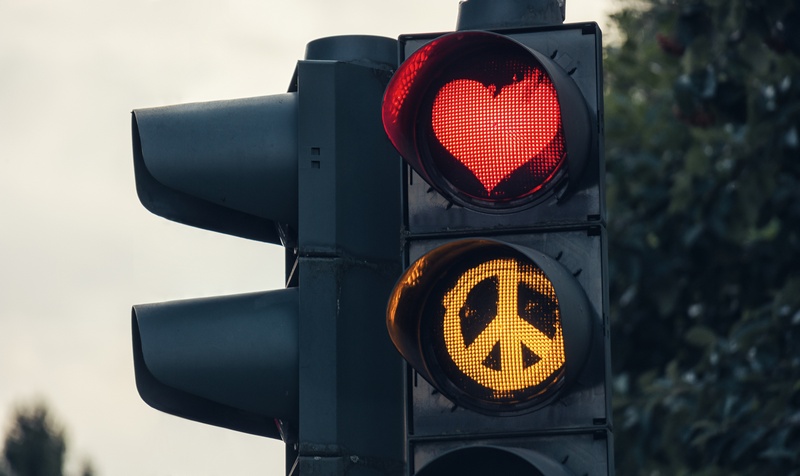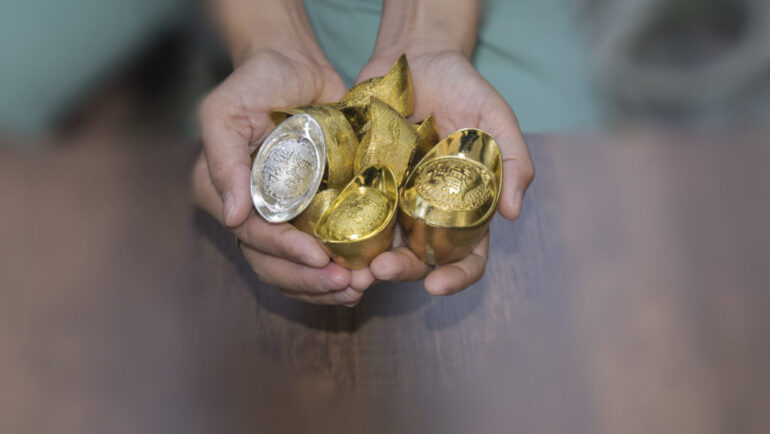Ahimsa means not causing harm to others, and yourself. When we practice ahimsa, we are practicing peace.
This concept is as old as the first time humans connected to each other. Yet we continue to make ourselves and others suffer. A particularly effective form of suffering is how we think about yourselves and others. WanderingyogiLee offers some suggestions for rising above wounding thoughts…
Hippocrates, the ancient father of medicine, said around 380 BCE, “As to diseases, make a habit of two things — to help, and/or at least, to do no harm.”
In another culture on the other side of the world, about 100 years later (mid 2nd century BCE), the Hindu mystic Patanjali, wrote a scripture called the Yoga Sutras, where he identified essential yamas (restraints, or what one should not do) and niyamas (observances, or what one should do). So, two vastly different cultures, a century apart, had two very wise people say very much the same thing. Do no harm to others.
Ahimsa is the first of the yamas that all yogis learn.
In Sanskrit, the ‘a’ at the beginning means ‘not’ or the opposite. Himsa, means ‘ harm’ or ‘violence’ (also coincidentally the name of an US heavy metal band from Seattle, Washington).
Ahimsa means to not harm or create violence to any living beings. That includes animals.
This idea of ahimsa, non injury to all living beings, has appeared in all religions, from Christianity, Jainism, Hinduism, and Buddhism. It forms the basis of the practice of modern day medicine.
Yet, I am sure that as you go about your day, you will see practices of everyday violence from one person to another.
Watch your thoughts; they become words. Watch your words; they become actions. Watch your actions; they become habit. Watch your habits; they become character. Watch your character; it becomes your destiny.”
– Lao Tzu
There are obvious ways to be violent – killing, hitting, throwing crockery (you get my drift). Though not many people would actually kill their fellow human beings, it is common to find people slashing at one another with angry words, or with contemptuous glances. Or freezing someone out, ignoring them or refusing to recognise their existence.

Ahimsa means you not only refuse to kill a person, you also refuse to hate them.
Our thoughts impact our overall wellbeing. You may be the healthiest person ever; eating well, exercising, drinking your green smoothies, and taking supplements.. doing everything ‘right’ – but if your thoughts are still harmful, you may as well go back to eating maccas.
Himsa thinking has a real physical downside.
‘God, I am such an idiot’ – this negative thought activates your fight or flight response, producing loads of cortisol (the ‘stress hormone’). Which must be processed by the adrenals, otherwise we become toxic. The adrenals, whose combined weight is equivalent to one teaspoon, are soon overworked. The first line of defence we lose is our bio chemical protection to illness. Hullo that cold that just won’t go away.
‘I think all women are basically dumb, who deserve everything they get’ Be nasty inside for long enough and the second line of defence drops – your cell-meditated immunity – which protects you against crazy pathogens and cancers.
Jealousy, negative judgement, anger and resentment – directed at someone else, at yourself – literally eat you away from the inside out. The same goes for those depressing, low esteem thoughts. Do any of this for long enough….
Take the needle off the old record groove
Unlearning himsa thought takes practice. Be patient – you spent years learning negative thoughts, newer positive ones won’t pop up overnight. WYOGILEE
Besides seeing a psychotherapist for any childhood traumas (or newer ones for that matter), there is meditation. And yoga. But first you have to learn to take the needle out of the negative record groove. Here are some ‘how to stop those himsa thoughts’:
- Notice when you are most likely to think negative thoughts and then give your mind another job – when are you most likely to feel negative? First thing in the morning, lunchtime, end of the day? What might trigger this for you? And then….begin to imagine you are going shopping. Make up list, visualise going to the store and choosing the items – every time you feel yourself heading into the thought space. If shopping is not your thing, imagine you are rearranging your books or your music on Spotify. I make up yoga practice plans (which also help me sleep, my himsa thinking is most likely to emerge just before I nod off).
- Trash the negative – write down every single negative thing you think about yourself and others on one piece of paper and throw it away. Every single time. You might have to do this every day for a while, don’t give up. I’ve been doing it for years over my mother, it’s taken time but it works.
- Take a good long soak in a hot bath – crazy but true but when we are warm, we are more likely to be positive in our thoughts about ourselves and others. And who doesn’t love a soak and some bubbles?

Meditation not only works on the monkey mind, it monkeys with your mind. WYogiLee
Once you have a sense of your thoughts, himsa or not, meditation is going to be so so much easier. Knowing as thoughts pop up, you have some handy ways to manage them.
Meditation (regular) digs deep and this ‘clearing’ of emotional debris goes away usually with a balance of introspection, mind management (see above tips), and some good friend chat time.
Some people do find (rare but happens), that negative internal narratives escalate when meditation increases in frequency or intensity. Ignoring these is very ‘himsa’. Stop meditation immediately and seek help.
Also remember your meditation teacher may know how to guide meditation, but unless they also happen to have solid credentials into how the mind works, speak to a friend first. Then seek professional help, if the negative thought chatter continues to escalate.
Do I have to be vegetarian or vegan to practice ahimsa?

Ahimsa is pretty specific about not harming another living being. It is truly bad for the karma bank (the amount of energy we give out and receive in the world). In short, we need a healthy karma bank account not just for now, but for our next manifestation.
Aussies eat about 111 kgs a year of meat (plus 44 kgs of chook), Brits about 81 kgs a year (meat), China eats about 54 kgs of pork. Americans eat an astounding 122 kgs of meat a year. This level of animal consumption is shortening your life now (sorry, have to say it as it is). And are you truly happy to be living this kind of life AGAIN? (a whole other topic).
If having a life karma deficit doesn’t scare you ahimsa, then the level of pesticide, GMO modified animal food, antibiotics in the animal production system should.
But… if cutting out certain things from your diet causes you too much grief, then that is also not ahimsa. Can you change things a little so you’re supporting environmentally friendly companies? Eat organically? Maybe eat vegan or vegetarian at least a couple of times a week? Buy fair trade?
Ahimsa is an attribute of the brave. It calls for strength not to retaliate in the face of violence, and the courage to receive blows without returning any. Mahatma Gandh

Lee Carsley is the WanderingyogiLee. A teacher of yoga and meditation for many years, she now uses her shamanic energy, helping you become the most aum-some you can be – which is pretty aum-some. Email Lee at lee@wanderingyogilee.com or follow her on Instagram and Facebook
You can book yoga, meditation or an energy healing session with Lee by clicking here on Book a class






